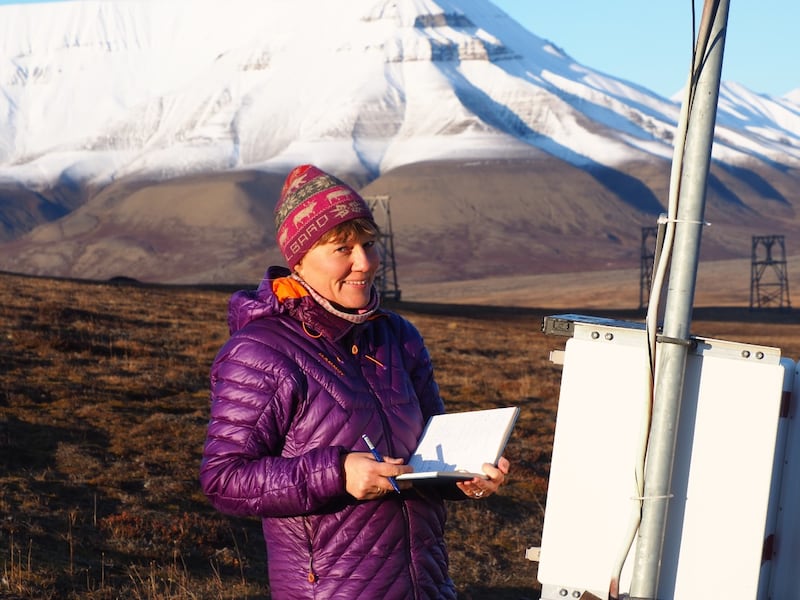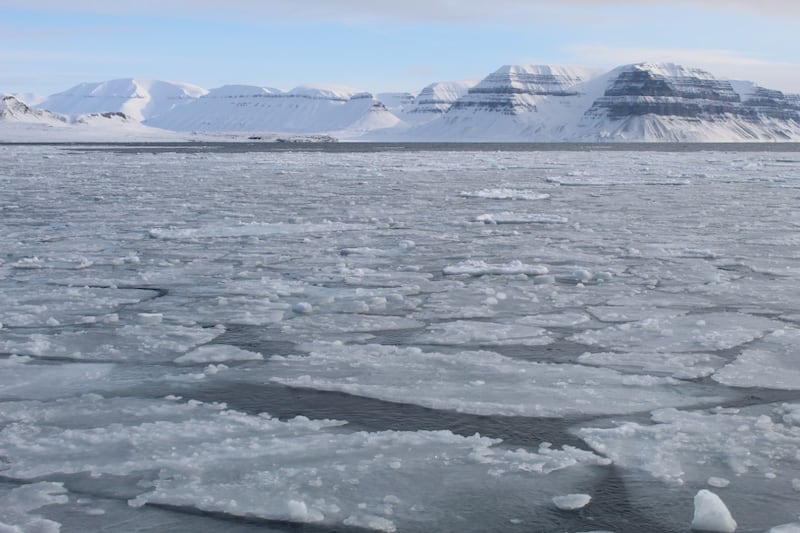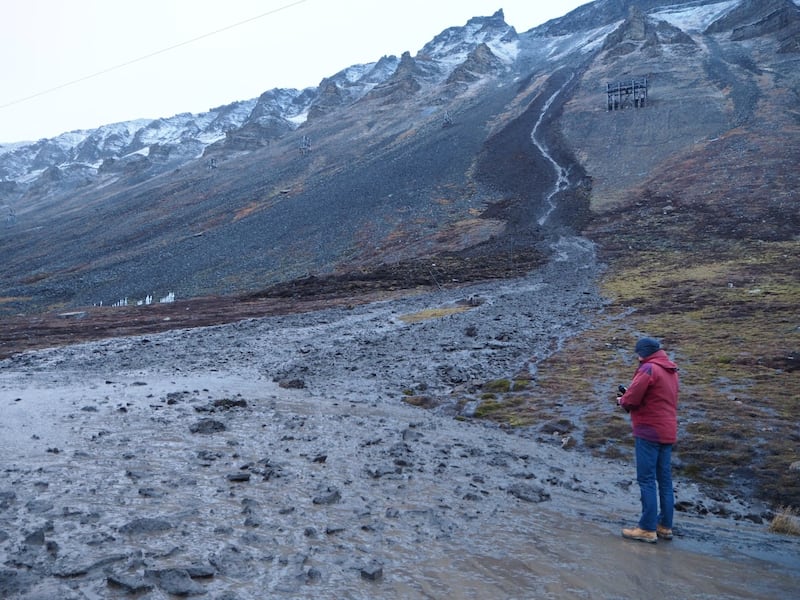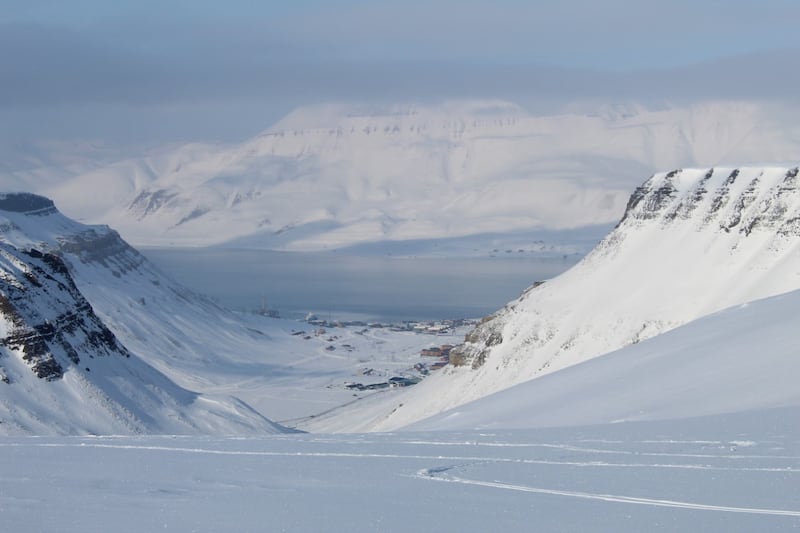Svalbard sits about halfway between Norway’s most northern point and the North Pole. Surrounded by the Arctic Ocean and covering an area similar to the Republic of Ireland, the archipelago ranges from 74 to 81 degrees north latitude.
Longyearbyen, Svalbard’s most populated region, is Earth’s northernmost permanent settlement. But with recent estimates suggesting the Arctic is warming four times faster than the global average, it is no surprise to learn its inhabitants are experiencing first-hand the effects of climate change.

Warm Atlantic water is now reaching further north reducing the sea ice cover in Svalbard’s fjords. Anna Lena Ekeblad has been a Svalbard tour guide for 27 years. Specialising in fjord expeditions, she has seen a remarkable transformation in the landscape. “We are here with the ice and this is magnificent. This is a sight which is getting more and more rare because of the climate changes.”
Warm ocean currents, which previously sank to 100 metres before reaching 79 degrees north, were found for the first time in 2007 to be active all the way to the surface. Consequently, Isfjorden — on which Longyearbyen is situated — remains almost completely ice-free. Cruises are now available in April into areas, which, Ekeblad says, were not accessible till June 10 years ago. But the effect of climate change in Svalbard is visible in areas beyond sea ice reduction. “The weather is changing — when it rains, it rains for longer”, she believes, and “wildlife patterns are changing; the vegetation also”.
READ MORE

The rising temperatures in the Arctic have been plain for all to see. In July 2020 Longyearbyen recorded a temperature of 21.7 degrees, breaking a 41-year record. Since then the highest November temperature has been recorded as well. Hopen weather station logged its highest March temperature since records began.
[ The Irish Times view on the melting ice shelf: a warning from AntarcticaOpens in new window ]
Traditionally, the High Arctic has been described as a cold desert. But higher air temperatures have meant heavier rain and wet snow increasing the risk of avalanches and landslides. After a deluge in 2015, Longyearbyen experienced its most devastating avalanche. Eleven houses were displaced from their foundations and tragically two people were killed.
Thawing permafrost threatens human settlements
Across the Arctic region buildings are constructed on permafrost, ground which has had a temperature of zero degrees or below for at least two consecutive years. Historically the archipelago’s structures were fixed on top of wooden piles anchored in the permafrost. But increasing ground temperatures have increased the risk of the wood rotting and becoming unstable as permafrost’s active layer (the layer that thaws and freezes annually) thickens and allows more water to flow in and around buildings.

This thawing may have a more immediate and direct effect on human settlements across Arctic regions than melting glaciers and sea ice, and changing weather patterns. With homes under threat in this way, a cross-disciplinary approach is the only way to address the “warming” challenge that researchers are attempting to meet.
Dr Hanne Christiansen is professor of physical geography at University Centre in Svalbard (UNIS) and a UArctic chair in permafrost. Having spent 20 years researching Svalbard’s permafrost, Christiansen finds that “we have research projects working with documenting and understanding how the climatic changes can affect the infrastructure built on permafrost”. She believes the infrastructure and geohazards issue is dominating the societal relevant research agenda there.
In recent years the risk posed by thawing permafrost has started to receive greater attention. Christiansen believes the media’s increased focus may be partly due to permafrost researchers using their “scientific knowledge to build observation systems and tools that can be useful also for communities” and that they may even be “useful in preparedness situations, where immediate action is needed”.
In 2021 the European Space Agency (ESA) used permafrost ground temperature trends to predict which locations would see the top 2 metres surpassing zero degrees. Using satellite images, the agency forecast that, “55 per cent of the infrastructure located on permafrost and within 100km of the Arctic coastline, infrastructures on which communities rely, is likely to be affected”.
This issue transcends borders, given that about a quarter of the northern hemisphere have permafrost. As a result research relies on scientists from many disciplines across the world sharing knowledge. Christiansen says: “We have very strong international collaboration going on in both the northern and southern hemispheres.” The current global situation, she admits, will make some types of collaboration challenging but overall “the collaboration that has been going on for more than 30 years will continue based on individual contacts”.
As permafrost type varies in different regions, Christiansen believes good international databases are needed in which scientists can store their observations. But for this to continue, she believes the focus must also be on training the next generation of scientists by including enough permafrost studies in higher education.
Co-ordinating Arctic research
The University Centre in Svalbard offers research-based education for those who want to become Arctic experts in biology, geology, geophysics and technology. It offers only courses that cannot be taught elsewhere, making full use of its unique geographic location. Along with student opportunities, a vast amount of research projects are in train across the archipelago. Co-ordinating this research in a challenging environment is essential to ensure that high-quality novel polar and climate research continues.

Thorbjørn Gilberg, a senior advisor at the Svalbard Science Forum (SSF), tasked with co-ordinating and advising on all research activities in Svalbard, indicates the scale of research: “We have 1,000 researchers coming through from 200 different institutions and 35 countries.”
Svalbard’s location is ideal for collecting Arctic research data. But Thorbjorn believes the facilities available there also play a key role in attracting researchers from all over the world. “There is so much infrastructure here available for the research community and especially if you go to Ny-Alesund,” Gilberg says.
The small town of Ny-Alesund hosts the world’s northernmost year-round research station. He believes that the systems put in place there “have managed to develop a common research strategy”.
“You can only do research that can only be done in Ny-Alesund. So if it can be done elsewhere, it shouldn’t be done in Ny-Alesund, and this is to keep Ny-Alesund and Svalbard a pristine research environment.”
Ironically, it is possible that the funds needed to combat the results of climate change may actually lead to cuts in the funding of vital research. But Norway, with a population of only 5.4 million is showing real ambition to develop and advance Arctic studies. Gilberg concludes: “We are the third most producing country of Arctic research output in the form of publications.”
Collaboration
For decades we have heard warnings about climate change effects that can be seen right now in Svalbard. Its inhabitants are all too aware their future will be different. But for scientists, Svalbard’s location and its proximity to sites that can offer information on how our planet is behaving during this crisis, guarantee its status as an invaluable research entry point for years to come. Knowing that these changes will affect people regardless of country, continent or government, international scientific cross-disciplinary collaboration is essential if we are to find a way through the challenges that are with us now and those that surely lie ahead.












